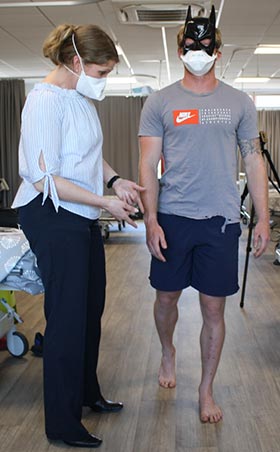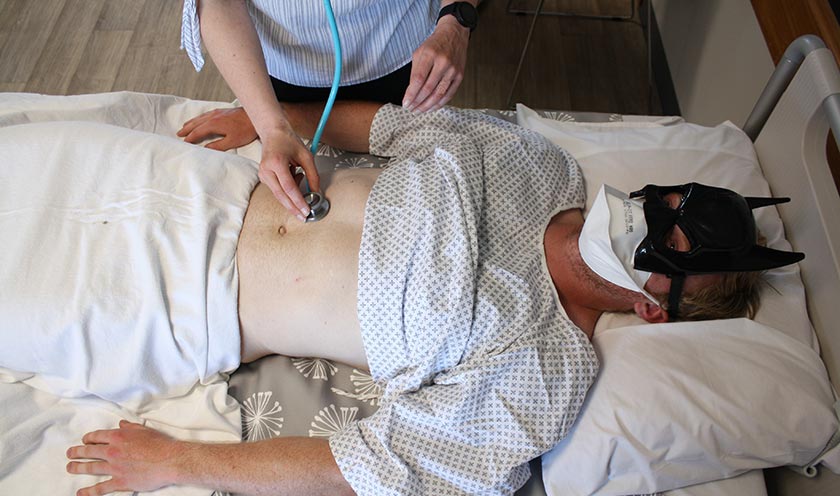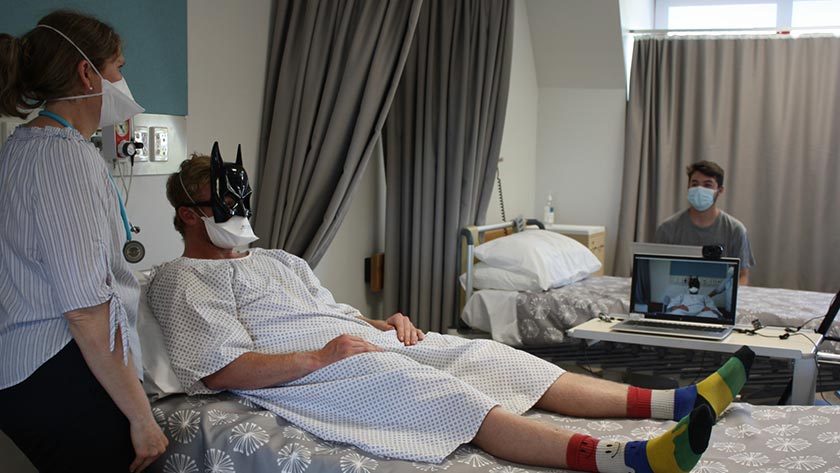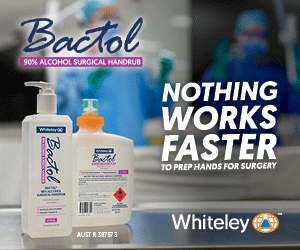2020 was one of the most exceptional teaching years we have experienced. The pandemic and public health response severely disrupted all clinically-based teaching institutions around the world. Nursing schools everywhere were required to rapidly pivot their courses online to limit the disruption to teaching.
This article highlights elements that can successfully engage nursing students in online learning. There is minimal literature discussing the need for a holistic teaching design that promotes a non-threatening, learning environment and which encourages the free exchange of ideas and questions normally associated with face-to-face teaching. The online learning programme we designed at Massey University incorporates humour, game-based learning and consideration of students’ wellness. We believe this will be of interest to our nursing colleagues, as well as those in other professions.
The focus of this course was health assessment and clinical decision-making. The learning objective was to equip first-year nursing students with the skills to assess each body system and make clinical decisions based on subjective and objective data.
Before Covid-19, teaching students these skills relied heavily on face-to-face and hands-on interactions, with students pairing up to practise history-taking, inspection, percussion, palpation and auscultation. Social-distancing guidelines following the Covid-19 outbreaks in Aotearoa New Zealand prevented this mode of delivery. A new strategy was needed to provide interactive learning to help students develop these clinical skills.
To adapt the course for online learning, we decided one teacher would demonstrate health-assessment skills on a live model, streaming to all students via Zoom across Massey’s three campuses. The teacher would both demonstrate clinical skills, and encourage online participation by the students. But we wanted to go further, by adding an element of fun. Enter Batman, stage right, to bring a playful context to our teaching.
Using humour in nursing practice can be an effective way of building connections between nurses, and with patients.
Using humour in nursing practice can be an effective way of building connections between nurses, and with patients.1 Some may dismiss humour as unimportant in the patient-nurse relationship, or as unprofessional.2 However, research has shown the value of humour in encouraging communication and building relationships, especially in stressful situations.1
Humour can also help reduce the power imbalance between students and teachers. Laughing together provides a moment of understanding and connection between learners and teachers. During the 2020 lockdown, students were desperate to continue their education, but heightened stress levels had become a significant barrier to learning. Humour allows for cognitive reframing of stressful or uncomfortable situations, making them appear less threatening or distressing.3 Time out from a highly stressed state can provide collective respite for students in the online classroom. Humour can create a positive learning environment, which encourages interaction.4
Counteracting anxiety
To make online learning about clinical assessment fun, we chose the “Caped Crusader” as our clinical model. The evolution of a Batman-inspired classroom created the opportunity to counteract potential anxiety.
Batman is a well-known character. Using his back story gave the subjective health history questions a humorous twist that resonated with the students while still conveying essential learning information. Our sessions were live-streamed to three campuses simultaneously, allowing students real-time access to see and interact with each body system’s health assessment.
Choosing to have our live model wear a superhero mask provided an element of anonymity, but also a sense of mystery and connection. Students were drawn into the Batman persona and fully engaged with learning about physical health assessment skills in the online environment. Batman created a relaxed and fun learning environment, which encouraged students to ask questions and contribute to the class. The chat function within the Zoom classroom was frequently used to ask questions or make humorous comments about Batman. Two lecturers monitored this and provided ongoing, immediate feedback and answers. Occasional reminders were needed to focus students on the assessment rather than adding yet another pun about Batman movie sequels!
Use of touch

As well as providing a respite from Covid-19 related stressors, the Batman classroom also presented students with the opportunity to observe how both humour and touch can be incorporated into their clinical practice. Massey nursing lecturers role-modelled the use of humour in the hui process5, which is used at the start of the online lesson, and while teaching health assessment. This validates and strengthens the use of humour as a communication tool. Seeing first-hand the teacher use humour to connect with Batman signalled to students that humour is an acceptable and valuable nursing skill. There were many moments of laughter shared between Batman and the teacher during the assessment, and this was reflected in the developing professional relationship.
Therapeutic touch was also role-modelled, reinforcing the role it can play in maintaining psychological wellbeing.6 During physical assessments, and at the conclusion of the interaction, touch was used to both connect to and reassure Batman. Students can often be hesitant to use touch because of concerns about the touch being seen as inappropriate.6 By normalising and providing real-life examples of touch, students’ fears can be reduced, allowing them to accept and incorporate these elements into clinical practice. This was especially relevant during a time when physical proximity and touch were discouraged and warned against in wider society under pandemic controls.
Demonstrating therapeutic touch and excellent hand hygiene in the online classroom reminded students about the importance of looking after patient wellbeing in clinical settings.
While the online classroom was fun, the enjoyment didn’t stop there for those of us involved in organising this lesson. It flowed over behind the scenes. We worked in a team of six: four teachers, Batman and one admin/technical support person. Everyone contributed their expertise and shared ideas. This created a vibrant and collegial environment both in and out of the online classroom.
The division of labour to match the strength of each team member allowed some respite from the pressure Covid-19 created in the academic environment. Working to our strengths in this extraordinary time allowed a flexibility which is rarely available in academia, creating its own energy and excitement. Collaborating across three campuses helped reduce isolation and strengthened our mental wellbeing and resilience. This reduction in personal stress was evident in our relaxed delivery while teaching in this novel learning environment and enabled us to role-model calm and professional personas.
Our online classroom provided an anchor for both staff and student wellbeing through creation of a playful environment, which was further reinforced with inclusion of a yoga session. All lecturers took part and wore Batman-branded clothing to continue the playful theme. Staff and students practised breathing and yoga poses, which helped reduce stress both inside and outside the classroom. Staff from the student health and wellbeing service ran this session, sharing their expertise in mindfulness and yoga techniques.
The collegial relationships formed through this experience have strengthened partnerships with departments outside nursing. This interprofessional collaboration has sparked future planning to include other superheroes in the classroom. Further mindfulness sessions have been included in the curriculum for 2021, as 2020 highlighted the need to build and foster resilience.
Positive feedback

The Batman classroom was a success for both students and teachers, as demonstrated by the overwhelmingly positive feedback. In a time of global and national uncertainty, Batman provided humour and playfulness that was greatly appreciated by staff and students, helping to manage rising stress. Role-modelling the use of humour and touch while conducting a health assessment gave students the opportunity to reflect and evaluate how they might develop these skills within the restricted environment created by Covid-19.
Once students returned to the face-to-face classroom, after physical distancing restrictions were lifted, they were enthusiastic and primed to practise health assessment skills. The relationships created across campuses and interprofessionally have proven invaluable and now provide ongoing opportunities to enhance the curriculum and the wellbeing of staff and students.
Staff involved in the Batman online classroom won the 2020 ASCILITE teaching innovation award. ASCILITE is a not-for-profit organisation promoting the use of technology to enhance tertiary education.
Shelley van der Krogt, RN, MHC, is a senior tutor at the School of Nursing, Massey University, Wellington. Jenny K Green RN, MPhil (Nursing), is a senior lecturer at the School of Nursing, Massey University, Albany. Camille Manning, RN, MN, is a professional clinician at the School of Nursing, Massey University, Manawatu. Marla Burrow, RN, CNL (AACN), MS, is a lecturer at the School of Nursing, Massey University, Manawatu.
References
- van der Krogt, S., Coombs, M. A., & Rook, H. (2020). Humour: A purposeful and therapeutic tool in surgical nursing practice. Nursing Praxis, 36(2), 20-30.
- McCreaddie, M., & Wiggins, S. (2008). The purpose and functioning of humour in health, health care and nursing: A narrative review. Journal of Advanced Nursing, 61(6), 584-595.
- Edwards, K. R., & Martin, R.A. (2014). The conceptualization, measurement and role of humor as a character strength in positive psychology. Europe’s Journal of Psychology, 10(3), 505-519.
- Embalzado, H., & Sajampun, E. (2020). Perspectives of students in Thailand on the use of humour in university classrooms. International Education Studies, 13(4), 17-26. doi:10.5539/ies.v13n4p17
- Lacey, C., Huria, T., Beckert, L., Gilles, M., & Pitama, S. (2011). The Hui Process: A framework to enhance the doctor-patient relationship with Māori (PDF, 184 KB). New Zealand Medical Journal, 124(1347), 72-78.
- Pedrazzal, M., Berlandal, S., Trifilettil, E., & Minuzzol, S. (2018). Variables of individual difference and the experience of touch in nursing. Western Journal of Nursing Research, 40(11), 1614-1637.





